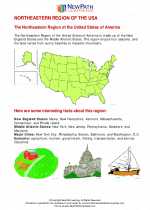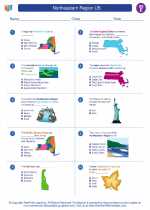Grand Canyon
The Grand Canyon is a steep-sided canyon carved by the Colorado River in the state of Arizona, United States. It is considered one of the Seven Natural Wonders of the World and is a UNESCO World Heritage Site. The canyon is 277 miles (446 km) long, up to 18 miles (29 km) wide, and over a mile (6,093 feet or 1,857 meters) deep.
Formation
The Grand Canyon was formed by the erosion of the Colorado River over millions of years. The rocks exposed in the canyon walls provide a record of Earth's geologic history, with some rocks dating back over 2 billion years.
Geography and Ecology
The Grand Canyon is divided into the North Rim and the South Rim. The North Rim is higher in elevation and has a cooler and wetter climate, while the South Rim is more accessible and visited by the majority of tourists. The canyon is home to a diverse range of plant and animal species, adapted to the varying elevations and climates within the canyon.
Study Guide
1. How was the Grand Canyon formed?
The Grand Canyon was formed by the erosion of the Colorado River over millions of years.
2. What is the significance of the rocks in the Grand Canyon?
The rocks in the Grand Canyon provide a record of Earth's geologic history, with some rocks dating back over 2 billion years.
3. What are the two main areas of the Grand Canyon?
The Grand Canyon is divided into the North Rim and the South Rim.
4. What makes the North Rim and South Rim different?
The North Rim is higher in elevation and has a cooler and wetter climate, while the South Rim is more accessible and visited by the majority of tourists.
5. Why is the Grand Canyon considered a UNESCO World Heritage Site?
The Grand Canyon is considered a UNESCO World Heritage Site due to its natural significance and geological history.
.◂Social Studies Worksheets and Study Guides Fifth Grade. Northeastern Region US

 Worksheet/Answer key
Worksheet/Answer key
 Worksheet/Answer key
Worksheet/Answer key
 Worksheet/Answer key
Worksheet/Answer key
